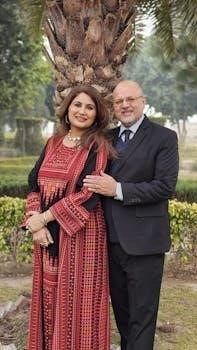
a gentleman’s guide to love and murder plot
A Gentleman’s Guide to Love and Murder⁚ Article Plan
This article delves into the darkly comedic world of “A Gentleman’s Guide to Love and Murder,” exploring its plot, characters, and musical style․ We will examine Monty Navarro’s audacious journey, the Dysquith family, and the show’s unique blend of humor and murder, examining its impact․
Overview of the Musical

“A Gentleman’s Guide to Love and Murder” is a musical comedy that premiered in 2012, captivating audiences with its unique blend of dark humor and Edwardian charm․ The musical, based on the novel “Israel Rank⁚ The Autobiography of a Criminal,” tells the story of Monty Navarro, who discovers he is ninth in line to inherit the Earldom of Highhurst․ This revelation sets the stage for a series of darkly comic events, as Monty decides to accelerate his path to nobility by eliminating the eight relatives standing in his way․ The show’s narrative unfolds with a witty and engaging approach, blending sophisticated humor with outrageous situations․ The musical is notable for its clever lyrics, catchy tunes, and the tour-de-force performance of one actor playing all the doomed Dysquith family members․ It received widespread acclaim, winning multiple Tony Awards, including Best Musical․ The musical’s success lies in its ability to balance macabre themes with lighthearted comedy, creating a truly memorable theatrical experience․ The musical is a raunchy, rowdy romp that is both entertaining and thought-provoking․
Plot Synopsis⁚ Monty’s Discovery
The story of “A Gentleman’s Guide to Love and Murder” begins in 1909, with Monty Navarro, a seemingly ordinary man, finding himself in a rather extraordinary situation․ Following the death of his mother, Monty learns a startling secret about his lineage⁚ he is a distant relative of the wealthy and aristocratic Dysquith family, specifically, he is ninth in line to inherit the Earldom of Highhurst․ This revelation, delivered with a mix of surprise and bureaucratic formality, completely alters Monty’s life trajectory․ He is introduced to his family history and the various members who stand between him and the inheritance․ This knowledge fuels his ambition and plants a seed of dark humor that drives the narrative․ The news comes at a time when Monty feels stuck in his middle-class existence, further motivating his desire to change his social status and his life․ This pivotal moment marks the beginning of Monty’s transformation from an unassuming young man into a calculating, albeit charming, schemer․ This sets the stage for his ambitious and deadly plan․
The Dysquith Family and Inheritance
The Dysquith family, the object of Monty Navarro’s newfound ambition, is a collection of eccentric and often unlikable characters․ This family of aristocrats represents the barrier between Monty and a life of wealth and social standing․ Each member of the family is unique, exhibiting a range of quirks and flaws that make them both comedic and easy targets for Monty’s machinations․ The family’s vast wealth and the prestigious Earldom of Highhurst are what motivates Monty, serving as a constant reminder of what he is denied by his position in the line of succession․ They are presented as a rather ridiculous group, further fueling the audience’s enjoyment of Monty’s plan․ The Dysquith family is not only a source of inheritance for Monty, but also a symbol of the social inequalities and absurdities of the Edwardian era․ Their presence in the musical is essential, as they provide both the obstacle and the humor for the plot․
Monty’s Ambitious Plan
Fueled by his desire for social advancement and a yearning to win the heart of Sibella, Monty Navarro formulates a daring and audacious plan to eliminate the eight relatives who stand between him and the Earldom of Highhurst․ This plan, born from a mix of desperation and ambition, involves a series of calculated murders, each tailored to the unique circumstances and personalities of the Dysquith family members․ Monty’s approach is not one of cold, ruthless efficiency, but rather a dark, humorous path of calculated schemes․ He utilizes a mix of clever tactics and fortunate coincidences to achieve his goals, making his journey both entertaining and morally questionable․ The audience is invited to witness his transformation from a penniless clerk to a calculating murderer, driven by the promise of wealth and a higher social status․ His ambition is the driving force behind the musical’s plot, making his actions both comical and shocking․
The Murders⁚ A Darkly Comic Approach
The murders in “A Gentleman’s Guide to Love and Murder” are not depicted with graphic violence but rather with a darkly comic sensibility, highlighting the absurdity of Monty’s actions․ Each demise is executed with a blend of wit and slapstick, often relying on elaborate and improbable circumstances, rendering them more humorous than horrific․ The musical employs a variety of comedic techniques, such as physical comedy, wordplay, and farcical situations, to depict the deaths of the Dysquith family members; These methods lighten the mood, turning what could be a grim subject into a source of laughter․ The audience is encouraged to find humor in the outlandish situations and Monty’s reactions, rather than focus on the violence itself․ This style maintains a lighthearted and entertaining tone, making the musical a unique and memorable experience․ The dark comedy is a defining element of the show, differentiating it from other musicals․
Musical Style and Influences
The musical style of “A Gentleman’s Guide to Love and Murder” is a delightful blend of Edwardian music hall traditions and modern musical theatre sensibilities․ The score, composed by Steven Lutvak, is heavily influenced by the music of the early 20th century, incorporating elements of operetta, vaudeville, and Gilbert and Sullivan․ The songs are characterized by intricate melodies, clever lyrics, and a light, buoyant feel that perfectly complements the show’s comedic tone․ Lutvak’s work draws inspiration from composers like Chopin and Noël Coward, creating a sophisticated yet accessible soundscape․ The orchestrations are lush and vibrant, enhancing the theatricality of the production․ This eclectic mix of styles contributes to the show’s unique charm and distinguishes it from other contemporary musicals․ The music plays a crucial role in driving the narrative and defining the characters, making it an integral part of the overall experience․
Key Characters and Performances
The success of “A Gentleman’s Guide to Love and Murder” is significantly attributed to its memorable characters and exceptional performances․ Monty Navarro, the charming and ambitious protagonist, is central to the narrative, his journey from a penniless clerk to a potential Earl is both captivating and hilarious․ The most notable performance is that of the actor who portrays all eight members of the Dysquith family, each with their distinct personalities and quirks․ This requires immense versatility and comedic timing, making it a standout element of the show․ Sibella Hallward, the woman Monty is infatuated with, adds a layer of romantic complication․ The performances are characterized by wit, physicality, and impeccable comedic delivery, enhancing the show’s farcical nature․ The cast’s ability to handle the intricate musical numbers and rapid-fire dialogue is commendable․ The interplay between the characters and the actors’ dedication to their roles are pivotal to the musical’s success․
Production History and Development
“A Gentleman’s Guide to Love and Murder” began its journey at the Hartford Stage in Connecticut, premiering in October and November 2012, directed by Darko Tresnjak․ This initial production, featuring Jefferson Mays, Ken Barnett, and Lisa O’Hare, marked the beginning of the show’s successful run․ The musical was a co-production between the Hartford Stage and the Old Globe Theatre, and subsequently moved to the Old Globe Theatre in San Diego, California, in March 2013․ The show’s development involved the collaboration of Steven Lutvak, who wrote the music and lyrics, and Robert L․ Freedman, who wrote the book and lyrics, with inspiration taken from the 1907 novel, “Israel Rank⁚ The Autobiography of a Criminal․” The production’s journey continued to Broadway, where it garnered critical acclaim․ The show’s path to Broadway included workshops and further refinement, solidifying its unique blend of comedy and macabre themes, ultimately earning it the 2014 Tony Award for Best Musical․

Critical Reception and Awards

“A Gentleman’s Guide to Love and Murder” received widespread critical acclaim, becoming a major hit during the 2014 theatre season․ The show garnered an impressive ten Tony Award nominations, ultimately winning four, including the coveted Best Musical award, along with Best Direction, Best Book and Best Costume Design․ In addition to its Tony success, the musical also earned seven Drama Desk Awards, which included Best Musical, and four Outer Critics Circle Awards, also including Best Musical․ The show’s accolades further extended to a Drama League Award for Best Musical․ Critics lauded the production’s witty humor, clever lyrics, and the outstanding performance of Jefferson Mays, who played all eight Dysquith heirs․ The musical was praised for its unique blend of dark comedy and Edwardian charm, establishing itself as a truly outstanding and memorable piece of theatrical entertainment and a highlight of the 2014 Broadway season with its numerous accolades․
Themes of the Musical
“A Gentleman’s Guide to Love and Murder” explores several compelling themes, primarily centered around ambition, social mobility, and the corrupting influence of wealth and power․ The musical examines the lengths to which individuals will go to achieve their goals, as Monty Navarro’s pursuit of the earldom highlights the seductive allure of upward social movement and the lengths he will go to achieve his ambition․ The show also delves into the concept of family and inheritance, presenting a satirical view of the aristocracy and their often-absurd traditions․ Through its dark comedy, the musical raises questions about morality and the justification of one’s actions in the face of desire․ Moreover, the story touches upon the themes of love and relationships, juxtaposing Monty’s romantic pursuits with his murderous endeavors, adding another layer of complexity to the narrative․ The show uses humor to explore these darker themes, encouraging audiences to consider the nature of ambition and morality․
The Show’s Humor and Tone
“A Gentleman’s Guide to Love and Murder” masterfully employs a blend of dark humor and witty sophistication, establishing a unique and engaging tone․ The show’s comedic style is reminiscent of classic British farces, characterized by its fast-paced dialogue, clever wordplay, and absurd situations․ The humor arises from the juxtaposition of Monty’s charming demeanor with his ruthless actions, creating a darkly funny and ironic effect․ The musical’s tone is also heightened by its Edwardian setting, which provides a backdrop of elegant propriety that contrasts sharply with the outrageous events unfolding on stage․ The show uses physical comedy, such as the rapid costume changes of the actor playing the various Dysquith family members, to amplify the farcical elements․ The musical’s lighthearted approach to murder allows the audience to enjoy the absurdity without feeling overwhelmed by the darker themes․ The overall tone is one of playful irreverence, making it a delightful and entertaining experience․

The Ending and Overall Impact
The conclusion of “A Gentleman’s Guide to Love and Murder” is both satisfying and darkly humorous, completing Monty Navarro’s audacious journey․ While the specifics might vary slightly, the core outcome involves Monty achieving his goal of becoming the Earl of Highhurst, often through a final, cleverly orchestrated act․ Despite his murderous path, the audience is often left with a sense of amusement rather than moral outrage, a testament to the show’s lighthearted approach to dark themes․ The overall impact of the musical is that of a highly entertaining and memorable experience․ The cleverness of the plot, the witty lyrics, and the memorable music all contribute to its lasting appeal․ The show successfully blends humor and suspense, creating a unique theatrical experience that leaves audiences thoroughly amused and pondering the nature of ambition․ The ending leaves a playful echo, reinforcing the show’s theme that sometimes getting away with murder can be quite fun, in a theatrical sense, of course․
Related Posts

webkinz gem hunt guide
Master the Webkinz Gem Hunt with expert tips, tricks, and secrets! Become a pro and uncover hidden gems faster than ever. Your ultimate guide to success!

deathwalker guide
Master the Deathwalker game with expert tips, strategies, and detailed walkthroughs. Become unstoppable!

tv guide pompano beach fl
Find the best TV channels, shows, and listings in Pompano Beach, FL. Your ultimate guide to entertainment. Tune in now!